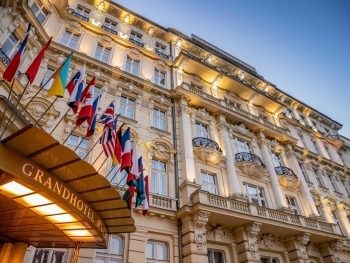Nestled at No. 43 King Street, Covent Garden, stands an edifice steeped in historical grandeur, embodying the essence of opulence and prestige. Its origins trace back to the late 17th century when Admiral Edward Russell, a pivotal figure in English naval history, established residence in 1689 or 1690. Russell's notable contributions included his instrumental role in William of Orange's ascension to the English throne and his commanding presence in the French war of 1689–97, marked by decisive victories such as the triumph over the French fleet at La Hogue in 1692. Honored for his service, he was bestowed with the title of Earl of Orford in May 1697, further solidifying his esteemed stature in society. The property, initially acquired through a twenty-one-year lease from his uncle, the first Duke of Bedford, became a hallmark of aristocratic living.
From its inception, the building evolved, witnessing various incarnations reflective of the changing times. During the late 18th and early 19th centuries, it served dual purposes, accommodating both a hotel and a coffee room. The latter, immortalized in 1804, retained echoes of its past glory, housing the famed lion's head, a relic originating from Button's coffee house, under the proprietorship of Charles Richardson. The property's allure extended beyond hospitality, with segments leased as Covent Garden Chambers, catering to discerning tenants seeking refined living spaces.
In the annals of architectural history, the years 1835–37 mark a significant chapter as the premises became the inaugural headquarters of the (Royal) Institute of British Architects. Under the stewardship of Walter Richardson, the wine merchant turned landlord, the building pulsated with creative energy, fostering intellectual discourse and artistic endeavors within its hallowed halls.
Transitioning from cultural hub to entertainment hotspot, the property underwent a metamorphosis in the mid-19th century, under the proprietorship of W. C. Evans, a luminary from the theatrical world. Renowned for hosting late-night soirées featuring melodious performances and sumptuous feasts, it garnered a reputation as a favored haunt for socialites and artists alike.
The dawn of the Victorian era witnessed further renovations, culminating in the construction of a spacious singing-room or music hall in 1855, spearheaded by John Green, affectionately known as 'Paddy' Green, a luminary in the realm of music halls. This architectural marvel, adjoined to the existing premises, ushered in an era of extravagance and merriment, captivating audiences with its unparalleled charm.
As the 19th century waned, the property continued its legacy of reinvention, evolving into the esteemed New Club, frequented by nobility and luminaries of the era. Under the auspices of Colonel F. A. Wellesley, an associate of theatrical impresario Hollingshead, it became a bastion of refined leisure, hosting extravagant soirées and cultural gatherings.
The turn of the century heralded a new chapter as the premises found resonance with the pugilistic arts, serving as the home of the National Sporting Club. Boxing contests became the mainstay of its entertainment repertoire, drawing crowds eager to witness the spectacle of athletic prowess within its hallowed confines.
In the ensuing decades, the property underwent a series of transformations, mirroring the ebb and flow of societal trends. From the resurgence of theatrical endeavors with the Players' Theatre Club to the adaptation as a fruit emporium under George Monro's stewardship, each iteration added layers to its storied past.
Today, while bearing the scars of time, No. 43 King Street stands as a testament to resilience, embodying the spirit of bygone eras within its weathered façade. Despite its altered visage, it remains a poignant reminder of a bygone era, preserving the echoes of illustrious occupants and vibrant gatherings that once graced its halls. As visitors traverse its thresholds, they embark on a journey through time, where the whispers of history linger amidst the echoes of a bygone era.












